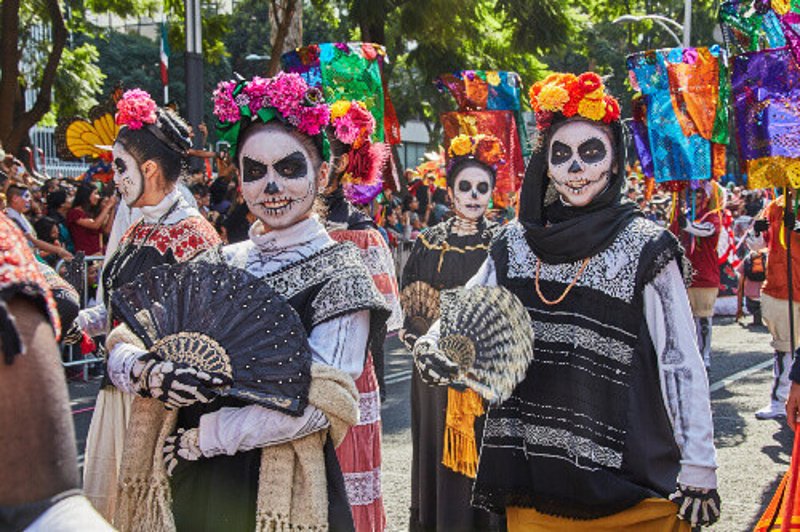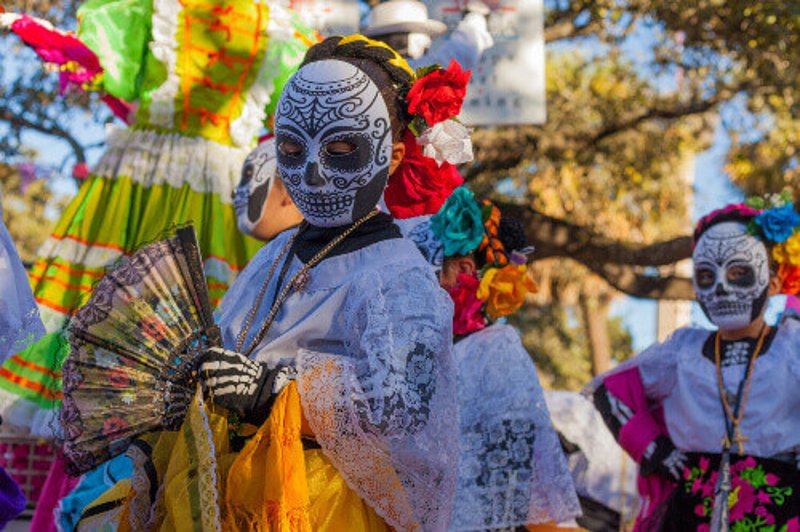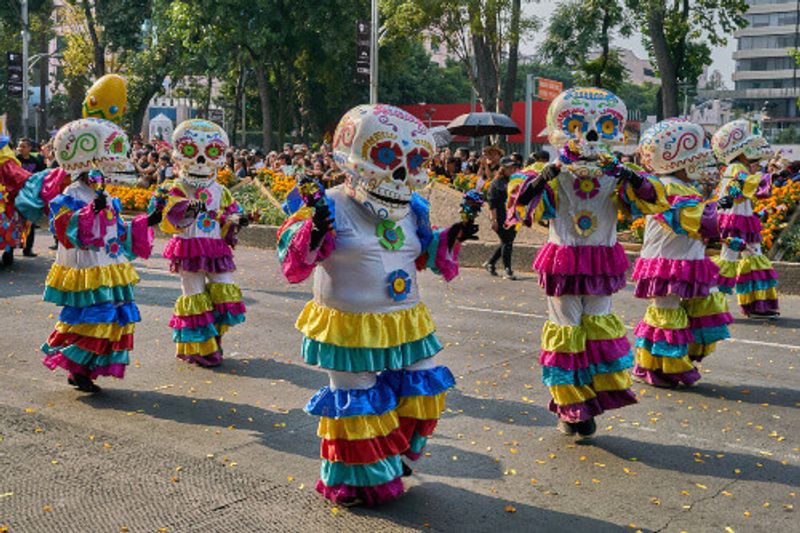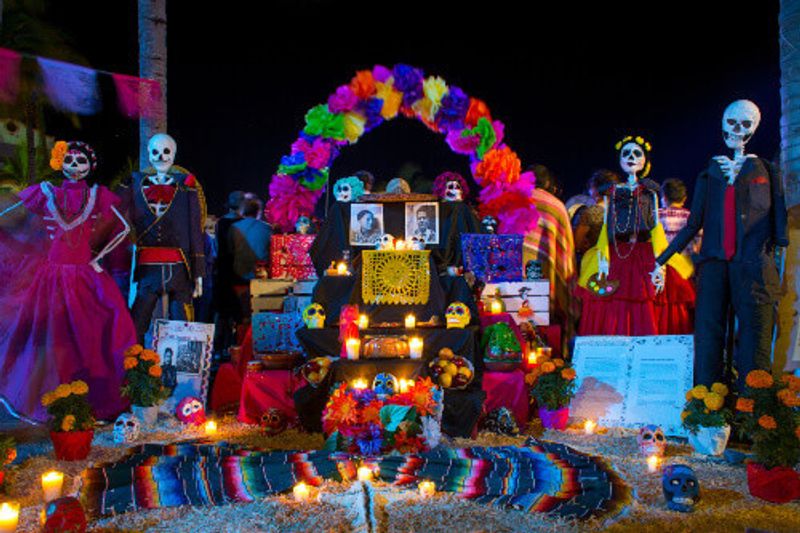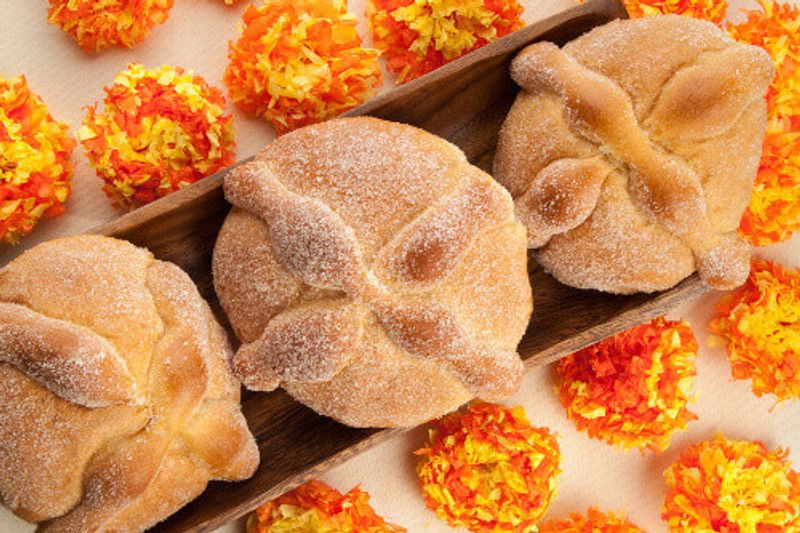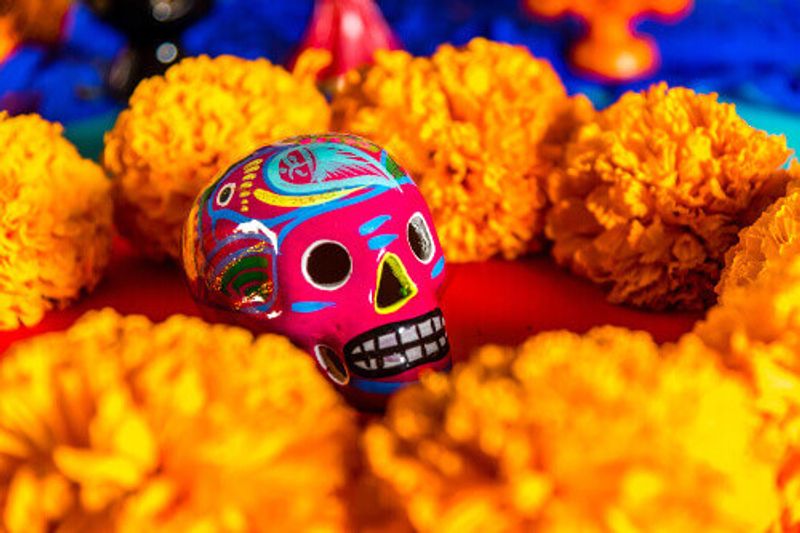Mexico’s most colourful celebration has a hallowed past
In many cultures, death is taboo. Discussing mortality in most circumstances is frowned upon or at the very least, unusual. But in Mexico, death is simply a part of life; not only is it talked about freely—it’s celebrated.
On the 1st and 2nd of November every year, much of Mexico comes alive with tradition, as the dead and the living are reunited. This two-day holiday is known as the Day of the Dead or Día de los Muertos. While events differ across the country, from extravagant parades to modest commemorations, the days are typically jovial. Deceased loved ones are remembered fondly and honoured with a fusion of ancient Mesoamerican traditions and Catholic beliefs.
Visit Mexico at this time of year and you’re in for a cultural treat.
What is Day of the Dead?
Let’s start with what it’s not: Mexican Halloween. This vibrant holiday is a celebration of life more than a sombre memorial or scary occasion. Día de los Muertos is recognised by UNESCO as an Intangible Cultural Heritage and centres around the belief that every year, the souls of the dead return to earth and join their loved ones in celebration. November 1 commemorates lost angelitos (children or little angels) and November 2 honours adults.
Origins
The history of Día de los Muertos can be traced back thousands of years, to pre-Columbian Mexico. Civilisations like the Aztecs and Toltecs considered death to be another phase of life and did not typically mourn the passing of their loved ones. For the Nahua people, the dead were never truly lost until they were forgotten. Several ancient holidays revolved around honouring the deceased and established traditions that are still observed today, like leaving offerings for loved ones.
Over the years, commemorations have evolved. Although celebrating death was considered sacrilege to the 16th-century Spanish conquistadors, the ancient traditions were not eliminated during their rule. Instead, as more and more Mexicans identified as Catholic, the various rituals were combined and shifted to November 1 and 2, aligning with All Saints Day and All Souls Day. Nowadays, many attend church services during Día de los Muertos, as well as observing original Nahua traditions.
Symbols
For a holiday about death, Día de los Muertos sure does radiate life. From the rainbow papel picado hung across streets, to the golden cempasuchitl (marigold) petals strewn through homes, the holiday is jam-packed with colour and vibrant symbolism.
The two most common images affiliated with Day of the Dead are calacas (skeletons) and calaveras (skulls). This iconography is one of the oldest withstanding traditions of the event, originating from the ancient Mesoamericans, but unlike western depictions, they’re far from morbid. During Día de Los Muertos, skeleton statues are often pictured in costumes with smiles on their faces – a joyous nod to death. Many people even paint their faces like calaveras and dress up to join in the festivities.
In the early 1900s, Mexican cartoonist José Guadalupe Posada drew a female calavera donned in lavish attire with a distinctive feathered hat, as a commentary on the way many Mexicans idolised European culture at that time. His point was that everyone, rich or poor, would end up a skeleton one day. Years later, artist Diego Rivera resurrected the drawing in a mural and dubbed her La Catrina—a character which eventually became synonymous with Day of the Dead.
Traditions
Thanks to its ancient origins, Día de los Muertos is steeped in tradition. Annual celebrations differ from state to state, but many of the most sacred practices are the same. For example, it’s customary to clean and decorate the graves of loved ones prior to the holiday.
Ofrendas (Offerings)
Multi-level altars dedicated to the deceased, ofrendas are a pivotal part of Día de los Muertos. These displays are typically tri-tiered and decorated with photos of the departed, their favourite possessions, marigolds, paper decorations, incense and religious figures. However, these alters are not for worship but rather, to encourage spirits back to the living world – thus, many also include food and water to welcome the dead after their long journey.
Comida (Food)
Food is an important part of many Mexican celebrations, and Day of the Dead is no exception. Typical Mexican fare is served up throughout the holiday and shared amongst family, but the most important dish is pan de muerto—a sweet bread flavoured with anise, decorated with bone-shaped dough and coated in sugar. Sugar skulls or Calaveras de azúcar are also popular.
Flor de Muerto (Flower of Death)
The Mexican marigold plays an important role during Día de los Muertos. This bright, seasonal plant from the sunflower family has a scent so strong, it’s believed to attract spirits. During the festivities, marigold is everywhere—in houses, decorating graves and scattered on alters. Some even leave trails of marigold petals between the graves of their loved ones and their homes, to guide spirits to their alters.
